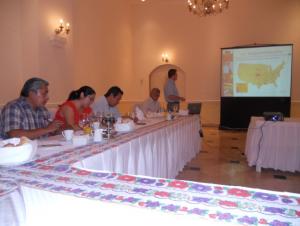One of the top recommendations from a comprehensive global assessment of U.S. Grains Council sorghum export programs was to re-focus on the export potential to Mexico and Japan, where opportunities exist to further develop and tell the U.S. sorghum story.
“Considering numerous factors, that recommendation may be sensible and provide the best return for the dollars invested,” said Kevin Roepke, manager of global trade for the Council. “However, Council staff and members will weigh the full report, which will be helpful as a guide for strategic planning, a framework for members to discuss and direct future sorghum programming.”
The assessment began last fall and included a full analysis of competitors. Market opportunities were examined in depth for more than 15 countries.
Other top-line recommendations in the report included exploring the feasibility of shipping sorghum via containers, conducting outreach to food aid programs and maintaining a strong trade communication program in Europe. Developing markets in Colombia and China were rated second, while building niche markets – such as human food uses, biofuels markets and pet food – were third in the recommended priorities.
The report said part of the sorghum story is that sorghum’s value should be within 3 to 7 percent of the price of corn, compared to outdated expectations of a 10 to 15 percent price break. “Increasing buyer perception of the value of sorghum is an important goal, and must include the true nutritional value of sorghum,” Roepke said. “At the same time, we must continue to talk about the non-tannin qualities of U.S. sorghum and reliability of our export system.”
The report was highlighted at the Council’s recent membership and marketing meeting in Charleston, S.C., and additional discussions and decisions on future sorghum programming will occur via ongoing committee meetings, Roepke said.
The report was produced by Bryant Christie Inc. and was derived from a detailed review of the last three years of U.S. Grains Council sorghum programming, trade mission reports and market data, as well as 91 interviews that included individuals ranging from trade members to government officials to consultants around the world.


